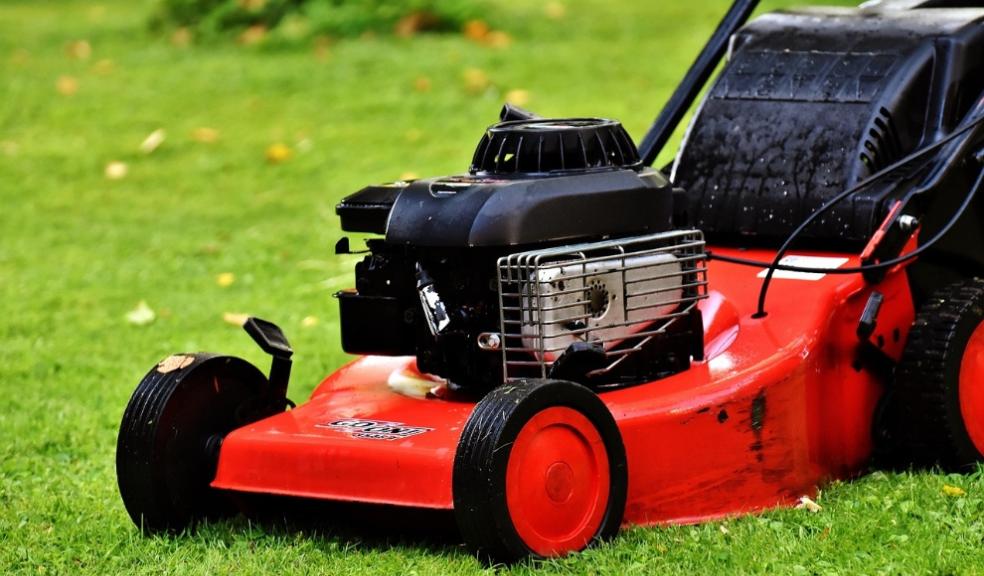
Don't mow the lawn this weekend: Expert advises on how to protect your grass during a heatwave
This weekend will see temperatures reach 32 degrees - and while it might seem the perfect time to get your lawn cut, mowing your grass in the heat can cause serious damage.
According to an expert from MyBuilder.com, the reliable way to hire tradespeople, Brits should leave mowing the lawn until the weather has cooled. Mowing in the heat can damage or even kill the blades, leading to ugly brown patches in the grass. On top of this, exerting yourself by gardening in extreme temperatures could lead to heat exhaustion or sun stroke. Leaving the lawn to grow during the heat protects the blade and the soil from the penetrating rays of the sun - but if you really can't bear to leave it, there are some important tips to follow.
Gardening expert James Lewis, from MyBuilder.com, said: "While the good weather might make you feel like you have a great opportunity to make your garden look neat and tidy - actually gardening in the heat can be a bad idea.
"High temperatures and strong sun exposure can damage plants and that includes grass blades. If you cut your grass, the blades will be more exposed to the sun, and the soil will also suffer. This will lead to bare patches in your lawn which will take time and effort to repair.
"Extra length in your grass will protect it until the worst of the heat is over - and there are other ways to help protect your lawn in extreme temperatures too."
MyBuilder.com's dos and don't for looking after your lawn (and yourself) during a heatwave include:
DO:
Take care of high footfall when you can
While you'll want to enjoy your garden in the nice weather, be mindful of heavy footfall on your grass. Walking on your lawn will add stress to it, which can risk further damage during heatwave, and can cause soil compaction - all of the above risking water not reaching the grassroots of your lawn.
Let it grow
Letting your grass grow a little longer allows it to cope with heat stress. Longer grass in hot weather acts as a "micro jungle", with taller stems helping to sustain a microclimate at soil level. Keeping your lawn length to around 2.5cm-5cm is recommended, although if you wish to grow it a little longer then up to twice that height can promote healthy blades of grass.
Raise your mower
To avoid scalping the lawn, the cutting height of your mower should be increased during dry conditions. The majority of lawn mowers have different height settings and a higher setting will allow valuable moisture to be trapped, limiting evaporation and encouraging stronger, deeper roots to grow, which improves drought tolerance overall. Leave the clippings on the lawn as mulch, which helps retain moisture and adds nutrients.
Create a wild garden
Wild gardens are better at coping with drought. You need to water it less and you'll have a bit more green, but you're also supplying a rich nectar source for all the bugs and pollinators, in turn helping the environment.
Be prepared to water
If you need to mow your lawn when it's hot, be prepared to regularly water it with about one inch of water per week, using any item from a sprinkler, a watering can, an irrigation system or a hosepipe. If using a sprinkler, it will take approximately 30 minutes to get a half inch of water. However, while it's important to water regularly, make sure not to over water - daily watering may not be needed.
Provide shade
Shade helps to lower water loss through evaporation which in turn creates a cooler microclimate, reducing the need for frequent watering while maintaining grass health and providing much-needed relief for your lawn There are many different options to add shade to your garden including awning, parasols, sail canopies, pergolas, arbours, gazebos or planting trees or tall shrubs. The best option for you will depend on your garden size, type and the budget you have available.
DON'T:
Panic
While a damaged lawn during a heatwave is understandably stressful, a damaged lawn is rarely irreversible and it is simply dry! Your lawn will likely recover once rainfall happens, which in the UK probably won't be too long away.
Get heatstroke
Mowing a larger lawn in extreme heat is exhausting work, and could even lead to heat exhaustion or heat stroke. Avoid it if you can, and, if you're unable to avoid mowing or gardening in hot weather, ensure you have applied sun cream, are wearing a hat and take regular breaks to drink water.
Water your lawn when it's sunny
Watering your lawn when the sun is hot and shining directly on it can cause damage. Blades of grass will normally only grow during the cooler part of the day. Watering is always best done either early morning before 8am or at night after 9pm when grass can grow, and be able to take the water and not evaporate. Alternatively, use your sprinklers at these times, either manually or with a set timer.
Waste water
A great tip is to utilise 'grey water' for irrigation, repurposing water from activities like vegetable boiling or bathing to conserve water resources. Adding a water butt or rain collector is another great way to save water and reduce your impact on the environment.
However, ensure that the water does not contain harsh chemicals to maintain the health of your grass and soil.
Forget to re seed
It's crucial that you don't forget to re-seed and fill in bare spots in your lawn with grass seed, as this will help reduce water loss and soil erosion The ideal times to overseed lawns are in springtime from March to early May, and then late summer into early autumn from the end of August into September.









